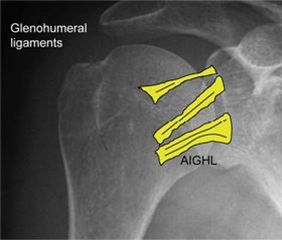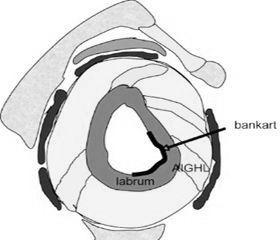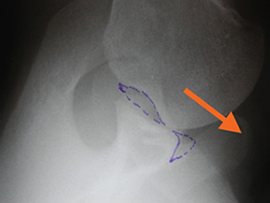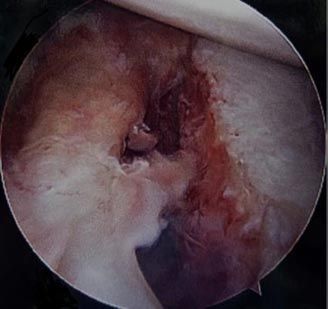Shoulder Instability
What is Shoulder Instability?
The shoulder joint provides a wide range of movement to the upper extremity, but overuse or trauma can cause instability in the joint.
Shoulder instability is when the ball and socket joint of the shoulder becomes unstable, causing the joint to dislocate partially or completely. This condition can result in pain, discomfort, and loss of function, making it difficult to perform everyday activities.
How Does Shoulder Instability Impact Your Anatomy and Health?
Shoulder instability can have a significant impact on your anatomy and health. When the shoulder joint becomes unstable, it can lead to dislocation, causing damage to the surrounding ligaments, tendons, and muscles. This can result in pain, weakness, and reduced range of motion, making it challenging to perform simple tasks such as lifting objects, reaching overhead, or sleeping comfortably.
Who is Most at Risk for Shoulder Instability?
Individuals who engage in sports or activities that involve repetitive overhead motions are at a higher risk of developing shoulder instability. This includes athletes such as tennis players, swimmers, and baseball players, and manual labourers who perform overhead work, such as painters and construction workers. People with a family history of shoulder instability are also at a higher risk of developing this condition.
Causes of Shoulder Instability
Shoulder instability can occur due to several factors, including:
- Trauma: A direct blow to the shoulder, such as a fall or collision, can cause the joint to dislocate, leading to instability.
- Repetitive Strain Injuries:
Overuse or repetitive strain injuries can cause damage to the muscles, ligaments, and tendons that support the shoulder joint, leading to instability over time.
- Genetics: Some individuals may have anatomical differences that make their shoulder joints more susceptible to instability.
- Aging: As we age, the structures that support the shoulder joint can weaken, making it more prone to instability.
What is a Bankart Tear?
Bankart tear is a specific injury to a part of the shoulder joint called the labrum. Labrum is a ring of fibrous cartilage that surrounds the glenoid and stabilises the shoulder joint.
Bankart tear leads to recurrent dislocations, feelings of looseness, lack of strength, pain or clicking and arthritis of the shoulder. Shoulder instability may be caused by injury, falling on an outstretched hand, or repetitive overhead sports such as basketball, volleyball or weight lifting.
Patients with shoulder instability may have severe pain, swelling, popping or grinding sound, partial or complete dislocation, loss of sensation or partial paralysis and loss of function.
Shoulder Instability Symptoms
Shoulder Instability generally causes acute pain. Sufferers have the following symptoms:
- Pain or discomfort in the shoulder joint
- A feeling of instability or looseness in the shoulder joint
- A popping or clicking sensation when moving the shoulder
- Reduced range of motion in the shoulder joint
- Weakness or loss of strength in the shoulder muscles
- Numbness or tingling in the arm or hand
What are the Types of Shoulder Instability?
Shoulder instability can be classified into two types: traumatic and atraumatic.
Traumatic instability occurs due to a sudden injury, such as a fall or collision, while atraumatic instability occurs due to repetitive strain injuries or genetic predisposition.
Traumatic instability is further classified into two types: anterior and posterior.
- Anterior instability occurs when the shoulder dislocates forward
- Posterior instability occurs when the shoulder dislocates backward
Atraumatic instability is classified into three types: multidirectional, inferior, and superior.
- Multidirectional instability occurs when the shoulder is unstable in multiple directions
- Inferior instability occurs when the shoulder dislocates downward
- Superior instability occurs when the shoulder dislocates upward
Stages of Shoulder Instability
Shoulder instability can be classified into three stages: subluxation, partial dislocation, and complete dislocation.
- Subluxation is the mildest stage of shoulder instability, where the humeral head (the ball-shaped end of the upper arm bone) moves out of its normal position but returns to the socket. It is often described as a partial dislocation, and the joint may feel unstable or loose.
- Partial dislocation, or partial subluxation, occurs when the humeral head partially dislocates from the glenoid (shoulder socket). In this stage, the humeral head moves out of the socket, but not completely, and returns to its normal position with minimal intervention.
- Complete dislocation is the most severe stage of shoulder instability, where the humeral head completely dislocates from the glenoid. This means the humeral head moves entirely out of the socket and does not return to its normal position without medical intervention.
The stages of shoulder instability may progress from subluxation to partial dislocation and then to complete dislocation if left untreated or if the underlying condition causing the instability is not addressed.
Diagnosis of Shoulder Instability
Shoulder instability is diagnosed through physical examination, medical history review, and imaging tests.
Consultation
During this consultation, your doctor will:
- Take a medical history: with emphasis on the mechanism of injury, age of first dislocation, need for hospital reductions and disability
- Perform a physical examination: looking at a range of motion, strength, nerve injury and apprehension with arm positions
Imaging Tests
Imaging tests, such as X-rays, magnetic resonance imaging (MRI), or computed tomography (CT) scans, may also be used to confirm the diagnosis and assess the extent of damage to the shoulder joint.
- X-rays: These pictures will show injuries to the bones that make up the shoulder joint. This may include a fracture of the socket (bony Bankart) or a crush fracture to the back of the humeral head (Hill-Sachs lesion)
- CT scan with 3D reconstruction:
Used to accurately assess bone loss as a result of instability
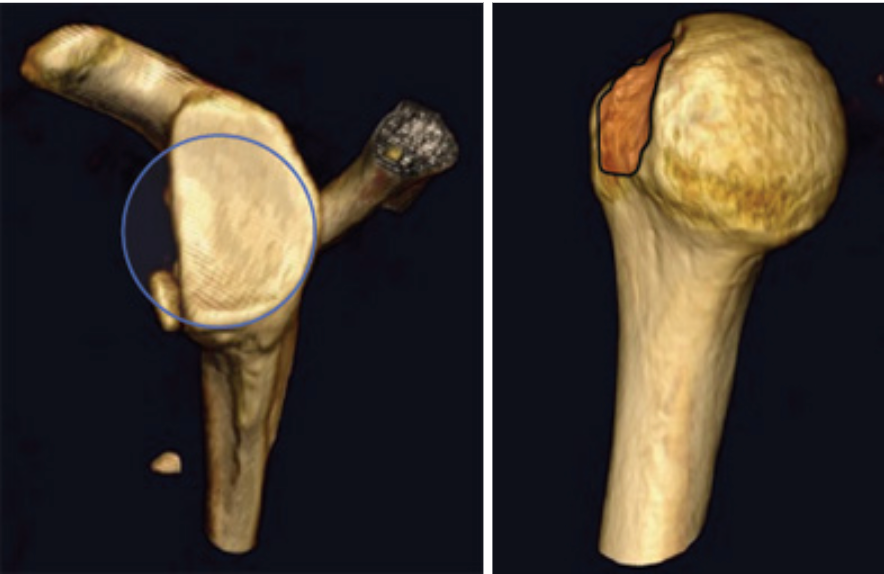
How Can Shoulder Instability be Treated?
Shoulder instability may be treated with nonsurgical or surgical options.
Non-Surgical Treatments
- Immobilisation: slings can be worn for comfort. Prolonged immobilisation increases weakness and does not prevent a recurrence
- Physical Therapy: can help restore range of motion and strength. This may be the principal therapy for “double-jointed” patients with lax ligaments and no tears.
- Activity modification: patients who dislocate out the front have to avoid, in the long term, having their arm in the throwing position under load.
Shoulder Instability Surgery
Surgery is an option for treating shoulder instability in cases where nonsurgical treatments, such as physical therapy, rest, or medications, have not succeeded or in severe instability.
The type of surgery recommended will depend on the underlying cause of the instability and the extent of the damage to the shoulder joint. Some surgical options for shoulder instability include:
- Arthroscopic Surgery: This minimally invasive surgery involves making small incisions around the shoulder joint and inserting a tiny camera and surgical instruments to repair the damaged structures. Arthroscopic surgery is commonly used to repair torn ligaments or cartilage and stabilise the shoulder joint.
- Open Surgery: Open surgery may be necessary in more severe cases of shoulder instability. This involves making a larger incision in the shoulder and repairing the damaged structures through the open incision. Open surgery may be necessary if there is significant damage to the bone or if the injury is too severe for arthroscopic surgery.
- Shoulder Replacement Surgery: This procedure involves removing the damaged parts of the shoulder joint and replacing them with artificial components. Shoulder replacement surgery is typically reserved for cases with severe damage to the shoulder joint, such as advanced osteoarthritis, or if other surgical options are unsuitable.
After surgery, rehabilitation is necessary to restore strength, range of motion, and stability to the shoulder joint. This may involve physical therapy, and following the rehabilitation plan prescribed by your orthopaedic surgeon is important.
What if Shoulder Instability is Untreated?
Leaving shoulder instability untreated can lead to several complications, including chronic pain, reduced range of motion, and recurrent dislocations. Over time, untreated shoulder instability can cause damage to the surrounding tissues and cartilage, leading to the development of arthritis.
Untreated shoulder instability can also impact your ability to perform everyday activities and affect your quality of life. It is important to seek medical attention if you are experiencing symptoms of shoulder instability to prevent further damage to the joint and improve function.
